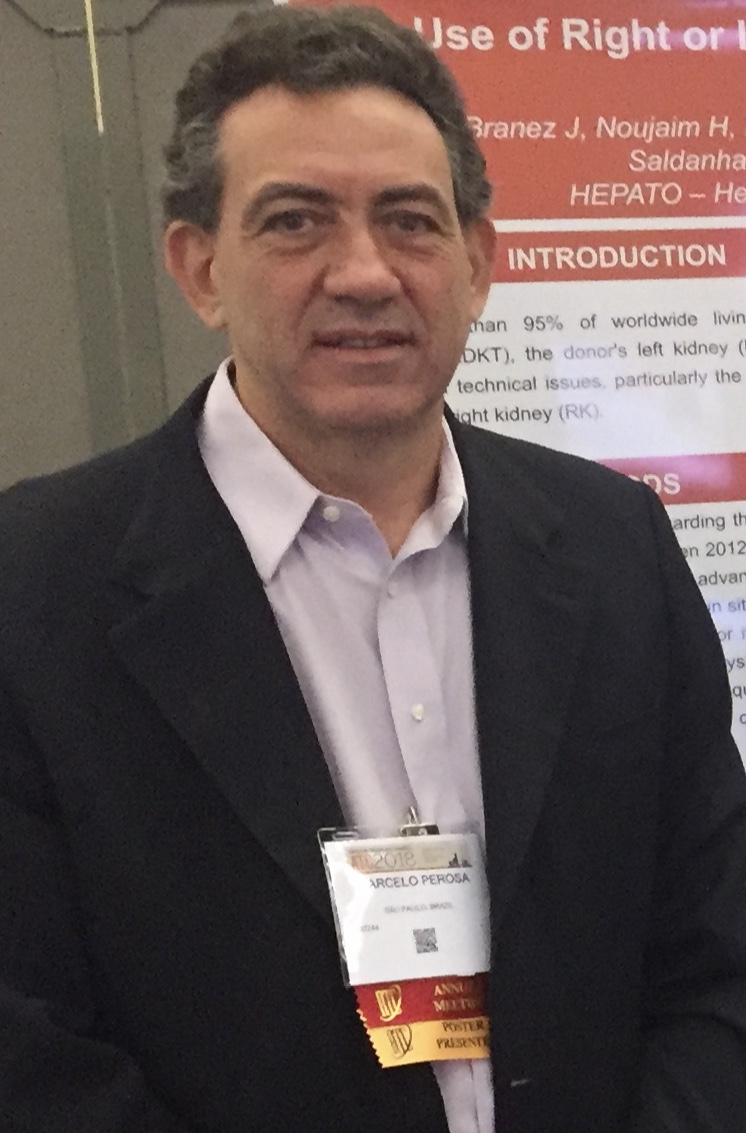
Transplant Surgeon and Director of Pancreas and Kidney Transplant Program - Leforte Hospital São Paulo - Brazil Largest Pancreas Transplant Program of Latin America with over 1000 PT performed Councillor of IPITA
Does lymphocyte count after rabbit antithymocyte globulin induction therapy matter in pancreas transplantation?
Marcelo Perosa 1, Fernanda Danziere1, Ana Claudia Vidigal1, Luiza R Souza2, Julia Andalaft2.
1Abdominal Organ Transplant, Leforte Hospital, São Paulo, Brazil; 2Medical School, University Sao Caetano Sul, São Paulo, Brazil
Rabbit antithymocyte globulin (rATG) is the most frequent induction therapy used in pancreas transplantation(PT). Monitoring of total lymphocyte count is used to drive rATG doses and frequency of administration. The aim of this study was to correlate the level of lymphocyte depletion to PT outcomes.
We retrospectively analyzed 233 technically successful PT performed from 2018 to 2021, being 126 SPK, 6 simultaneous pancreas and living-donor kidney(SPLK), 87 PAK and 14 PTA. Patients were distributed in three groups according to the number of days(among the first 15 post-transplant days) that recipients achieved a total lymphocyte count < 200 per µL: Group 1(L0)=Zero days with lymphocyte < 200, Group 2(L1-3)=1-3 days and Group 3(L>3)=more than 3 days. RATG was given at 1-1.5mg/kg/dosage with a cumulative total dose of 5mg/kg for SPK and 7mg/kg for solitary PT(S-PT) or SPLK according to total lymphocyte count. The inclusion criteria were patients with 1-year patient survival who received at least 3 doses of rATG. Primary end-points included rate of biopsy-proven acute rejections and long-term immunologic graft failure. Secondary end-points were 1-year estimated glomerular filtration rate(eGFR) for SPK patients and the appearance of dnDSA. Pancreatic enzymes and serum creatinine were compared between the three groups at 1, 6 and 12 months post-transplant. A separate analysis was conducted for the 126 SPK and 107 S-PT+SPLK.
Groups L0, L1-3 and L>3 included 72, 124 and 37 PT recipients, respectively. Recipient age was similar between the 3 groups and there were no patients with cPRA>80% among SPK groups and only 3 cases in the L1-3 group for S-PT+SPLK(p=0.195). Serum creatinine and eGFR were similar at 1, 6 and 12 months post-transplant among the 3 groups for SPK patients as were pancreatic enzymes for all groups. Among SPK patients, the occurrence of rejection(30% x 22.2% x 28.6%,p=0.636), dnDSA(2.5% x 8.3% x 14.3%,p=0.282), 1-year kidney(97.5% x 97.2% x 100%,p=0.822) and pancreas(100% x 98.6% x 100%) graft survivals, long-term kidney(2.5% x 2.8% x 7.1%,p=0.667) and pancreas(0 x 4.2% x 0,p=0.316) immunologic failure were similar between groups L0, L1-3 and L>3,respectively. The comparison of the 3 groups among S-PT+SPLK transplants also showed similar rate of rejections(46.9% x 42.3% x 30.4%,p=0.460), dnDSA(18.7% x 15.4% x 17.4%,p=0.920), 1-year pancreas graft survival(90.6% x 88.5% x 86.7%,p=0.909) and long-term immunologic pancreas failure(15.6% x 19.2% x 30.4%,p=0.385).
Monitoring of total lymphocyte count after rATG induction therapy did not impact graft outcomes and immunological events among PT recipients. Therefore total lymphocyte count monitoring may be useful rather for driving the frequency of rATG administration and prevent severe lymphopenia than predict graft outcomes.